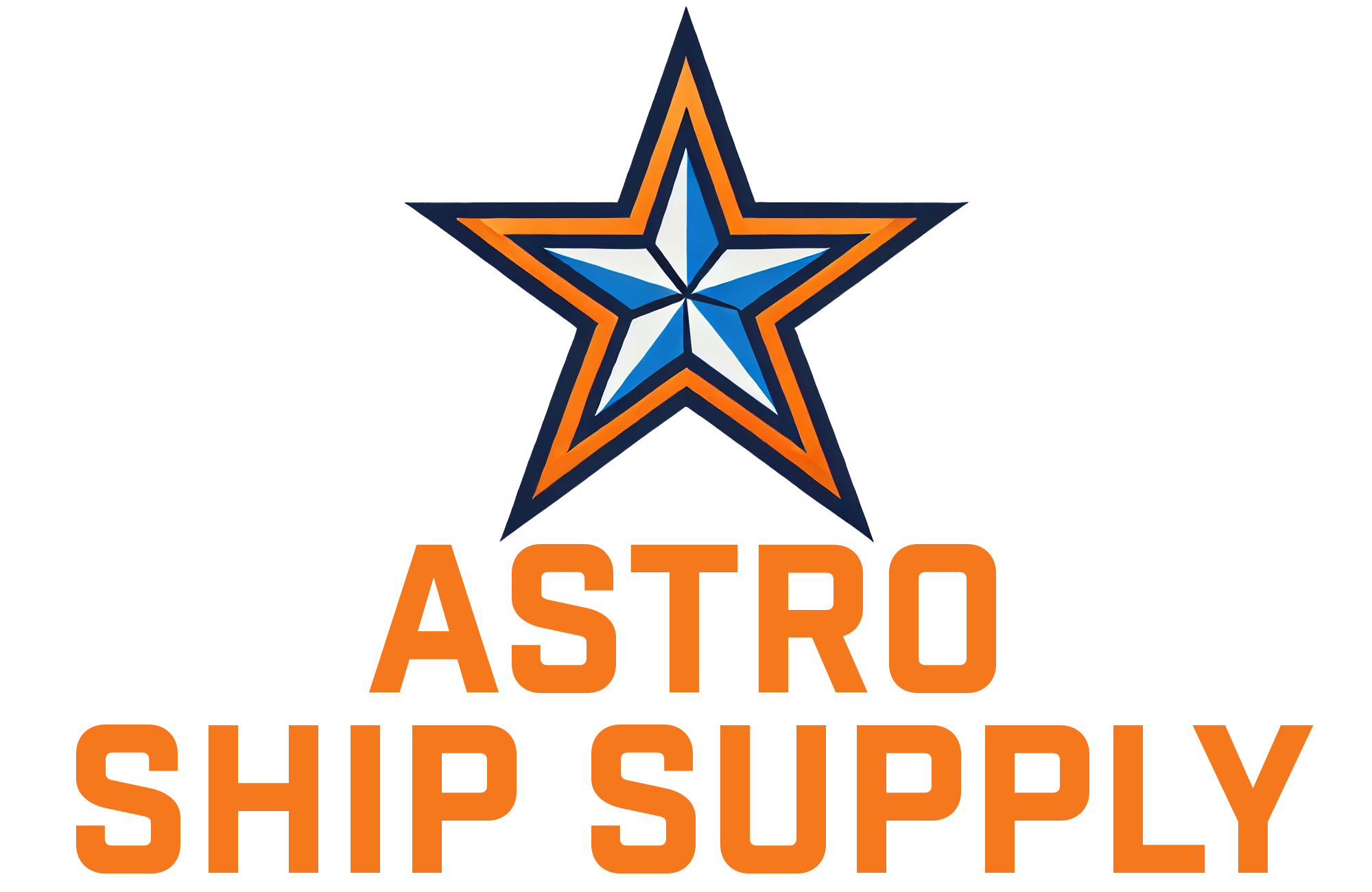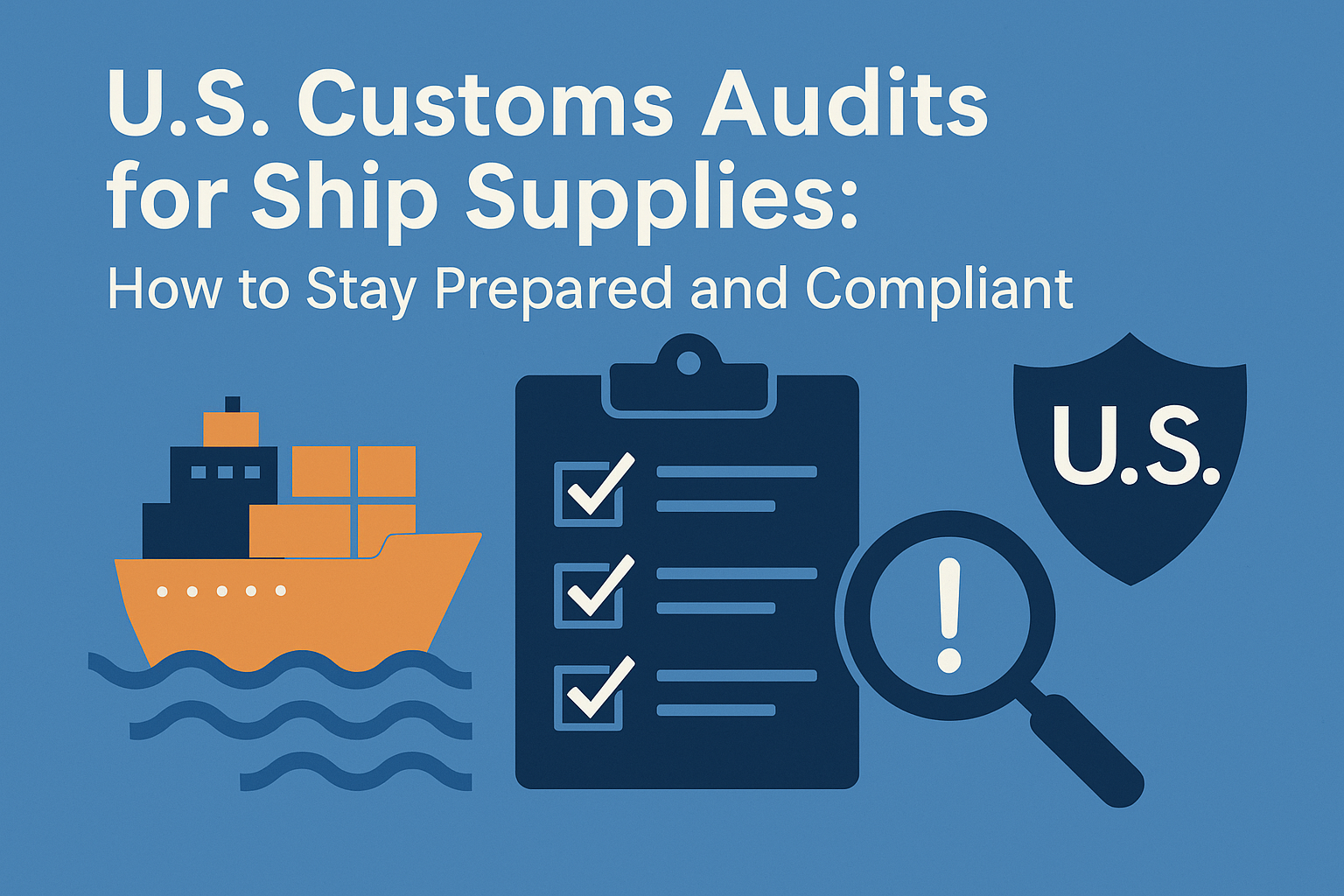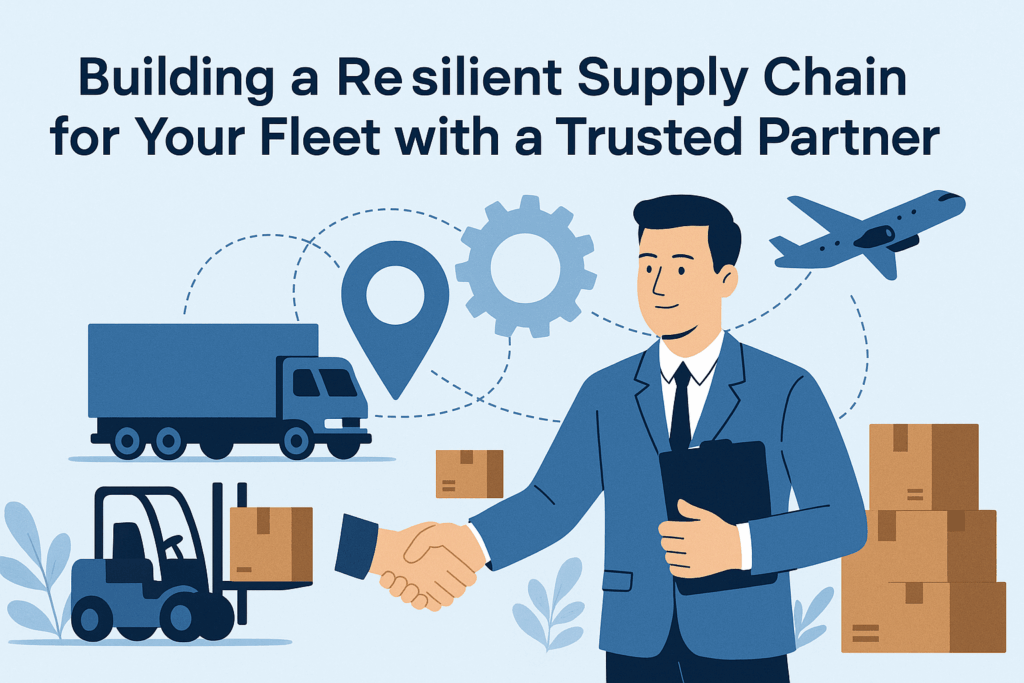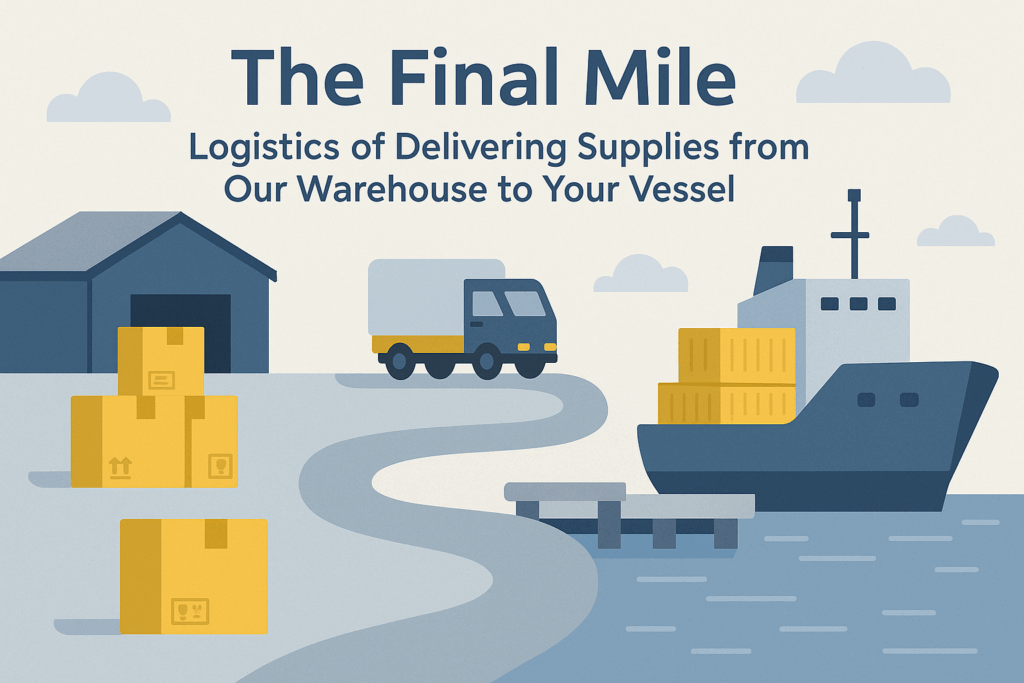This comprehensive guide delves deep into the intricacies of U.S. Customs audits for ship supplies. We’ll uncover why these audits are conducted, what CBP scrutinizes, and most importantly, how you can build a robust framework for compliance that ensures readiness and resilience. Whether you’re a seasoned maritime professional or new to the complexities of ship supply, staying informed is your best defense against potential penalties and disruptions.
Understanding U.S. Customs Audits: The Basics
U.S. Customs audits, conducted primarily by the CBP, serve as a vital mechanism for ensuring compliance with import laws and regulations. For the ship supply sector, these audits verify that all goods—from provisions and bonded stores to technical equipment—are accurately declared, valued, and documented according to federal statutes.
Why Are They Conducted?
CBP’s primary objectives are to enforce trade laws, secure borders, and collect duties. Audits for ship supplies focus on:
- Revenue Protection: Ensuring accurate payment of duties, taxes, and fees.
- Trade Compliance: Verifying adherence to regulations concerning classification, valuation, country of origin, and special trade programs.
- Security: Preventing illicit goods from entering U.S. territory, even temporarily, via vessels.
- Fair Trade: Ensuring a level playing field for businesses by preventing unfair practices.
Key Regulations and Agencies
The CBP operates under various legislative acts, including the Tariff Act of 1930, which governs import procedures, and specific regulations concerning foreign trade zones (FTZs) and bonded warehouses. For ship supplies, understanding the nuances of entry procedures, duty exemptions for “vessel stores,” and proper documentation is crucial. The CBP website (CBP.gov) is an invaluable resource for official guidelines and updates.
Key Areas of Scrutiny in Ship Supply Audits
CBP auditors meticulously examine several facets of your operations. Preparing for an audit means understanding where their focus lies.
Provisions and Food Supply
This category includes all food products, beverages, and general provisions delivered to vessels. Auditors will verify:
- Origin and Classification: Are perishable goods correctly declared? Are they eligible for duty-free status as vessel stores?
- Quantity and Valuation: Do invoices match quantities delivered and declared values?
- Health and Safety Compliance: Adherence to FDA and USDA regulations, especially for imported food items.
- Documentation: Proper manifests, health certificates, and purchase orders.
For more details on provision services, you can visit our Provisions & Food Supply page.
Bonded Stores
Bonded stores typically consist of duty-free items like tobacco, alcohol, and luxury goods intended for consumption by the crew or passengers outside U.S. territorial waters. Scrutiny here is exceptionally high:
- Inventory Control: Strict reconciliation of purchases, deliveries, and remaining stock.
- Sealing and Security: Verification that bonded goods are properly sealed and secured until departure.
- Documentation: Precise manifests, bond forms, and proof of export/departure.
Discover the strategic advantages of compliant bonded store services on our Bonded Stores section.
Deck and Engine Supplies
These encompass a wide range of operational necessities, from lubricants and spare parts to safety equipment. Auditors will look at:
- End-Use Verification: Ensuring supplies are indeed for vessel use and not diverted for domestic sale.
- Harmonized Tariff Schedule (HTS) Classification: Correct coding for each item, which impacts duty assessment.
- Valuation Methods: Consistent and accurate valuation of goods.
Cabin & Accommodation Supplies
Linen, toiletries, and other crew comfort items also fall under audit purview, with focus on accurate declaration and eligibility for duty exemption if applicable. Learn more about ensuring crew comfort and vessel efficiency through compliant Cabin & Accommodation solutions.
Documentation and Record-Keeping
This is arguably the most critical area. Auditors will demand:
- Purchase orders and sales invoices
- Bills of lading and manifests
- Proof of delivery/receipt by the vessel
- Customs declarations (e.g., CBP Form 1302)
- Inventory records and reconciliation statements
- Export documentation if applicable
How to Stay Prepared: Proactive Compliance Strategies
Preparation is key to navigating a customs audit successfully. A proactive approach not only mitigates risks but also fosters a culture of compliance within your organization.
Robust Record-Keeping
Your documentation is your first line of defense. It must be accurate, complete, and easily accessible.
- Digital vs. Physical Records: While physical copies are sometimes required, digitizing records significantly improves accessibility and searchability during an audit. Ensure secure cloud storage and regular backups.
- Essential Documents: Maintain detailed records for every transaction, including purchase orders, invoices, delivery receipts, import declarations, customs bonds, and inventory records.
- Retention Policies: Adhere to CBP’s record retention requirements (typically five years from the date of entry). Implement a clear, enforced policy for document storage and disposal.
Internal Controls and Training
A strong internal control environment minimizes errors and fraud.
- Establishing Clear SOPs: Develop Standard Operating Procedures for all aspects of ship supply, from procurement to delivery and customs declaration. Ensure these SOPs are regularly reviewed and updated.
- Training Staff on Compliance: Conduct mandatory, recurring training for all employees involved in supply chain and customs processes. This should cover HTS classification, valuation, documentation, and specific CBP requirements.
- Regular Internal Audits: Implement a program of periodic internal audits to identify weaknesses and ensure adherence to your SOPs before CBP does.
Vendor Management
Your supply chain is only as strong as its weakest link.
- Vetting Suppliers for Compliance: Ensure your vendors understand and comply with relevant customs regulations. Include compliance clauses in your contracts.
- Supply Chain Transparency: Demand transparency from your suppliers regarding product origin, certifications, and compliance documentation.
Technology Adoption
Leveraging technology can significantly streamline compliance efforts.
- ERP/Supply Chain Management Systems: Implement systems that can track inventory, manage documentation, and integrate with customs filing platforms.
- Customs Compliance Software: Specialized software can assist with HTS classification, duty calculation, and audit trail management.
Comparative Analysis: Common Audit Pitfalls vs. Best Practices
Understanding where companies typically stumble can illuminate the path to best practices.
| Audit Pitfall | Impact | Best Practice / Proactive Solution |
|---|---|---|
| Incomplete or Disorganized Documentation | Delays, fines, increased scrutiny, inability to prove compliance. | Digital record-keeping, strict document management SOPs, centralized database. |
| Incorrect HTS Classification | Underpayment or overpayment of duties, potential penalties, retroactive assessments. | Regular training for classification, using classification software, seeking expert advice for complex items. |
| Inaccurate Valuation of Goods | Duty discrepancies, suspicion of undervaluation. | Consistent valuation methodologies, clear audit trails for pricing, reconciliation of invoices and declarations. |
| Lack of Internal Controls | Increased risk of human error, fraud, and non-compliance going unnoticed. | Implementing robust internal audit programs, segregation of duties, regular compliance training. |
| Inadequate Bonded Store Management | Penalties for diversion, loss of bonded warehouse privileges. | Strict inventory reconciliation, secure storage protocols, dual-verification for sealing/unsealing. |
| Poor Communication with CBP | Missed deadlines, misunderstandings, perceived lack of cooperation. | Designating a single point of contact for CBP, prompt and transparent responses, proactive inquiries for clarification. |
Example Usage Scenarios / Case Approach
Understanding compliance challenges through practical scenarios can be highly illustrative.
Scenario 1: Misclassified Provisions
The Situation: A ship chandlery routinely supplies imported specialty cheeses to vessels. Due to an oversight in training, a new clerk consistently classified these cheeses under a generic foodstuff HTS code, leading to an underpayment of duties over several quarters. During a CBP audit, this discrepancy was flagged.
The Impact: The chandlery faced significant retroactive duty payments, substantial penalties for negligence, and increased scrutiny for future shipments. Their customs bond was also at risk.
The Resolution (Best Practice): Had the company implemented a robust internal audit system, the misclassification would have been caught during a periodic review. Regular, item-specific HTS classification training for all relevant staff, coupled with an automated classification tool, could have prevented this costly error. Establishing a clear process for seeking expert classification advice for new or complex products would also be crucial.
Scenario 2: Incomplete Bonded Store Records
The Situation: A busy ship chandler failed to maintain meticulous records of bonded liquor and tobacco delivered to vessels, often relying on simple delivery notes rather than detailed manifests. During an audit, CBP found discrepancies between declared inventory and actual deliveries, leading to suspicions of diversion.
The Impact: The chandler faced accusations of improper handling of duty-free goods, severe financial penalties, and the potential revocation of their bonded warehouse license. The disruption to their bonded store operations was significant.
The Resolution (Best Practice): Implementing a sophisticated inventory management system specifically for bonded stores, which includes barcode scanning for incoming and outgoing goods, real-time reconciliation, and automated manifest generation, is essential. Furthermore, strict adherence to CBP-mandated sealing procedures and dual-verification processes for all bonded store transactions would provide irrefutable proof of compliance.
Key Compliance Milestones & Audit Readiness Checklist
To ensure continuous readiness, consider these critical milestones and a practical checklist:
- Designate a Compliance Officer: A single individual or team responsible for overseeing all customs-related activities.
- Conduct a Baseline Assessment: Evaluate your current compliance posture against CBP regulations.
- Develop a Compliance Manual: A living document outlining all procedures, policies, and responsibilities.
- Implement a Training Program: Regular, mandatory training for all staff involved in import/export operations.
- Establish Internal Audit Protocols: Periodic self-assessments to identify and rectify non-compliance before CBP does.
- Foster a Culture of Transparency: Encourage employees to report potential issues without fear of reprisal.
Audit Readiness Checklist:
- ✓ All customs-related documents (invoices, manifests, POs) are organized and easily retrievable.
- ✓ HTS classifications are reviewed periodically and accurate for all products.
- ✓ Valuation methods are consistent and supported by documentation.
- ✓ Bonded store inventory is reconciled regularly with no discrepancies.
- ✓ Staff are up-to-date on the latest CBP regulations and internal procedures.
- ✓ All permits and licenses (e.g., bonded warehouse, IFM) are current.
- ✓ Communication channels with customs brokers and legal counsel are established.
- ✓ A designated point person for CBP inquiries is identified.
Leveraging Expertise: When to Seek Professional Help
While internal efforts are crucial, the complexity of customs regulations often necessitates external expertise.
- Customs Brokers: Licensed professionals who specialize in customs clearance and can advise on classification, valuation, and entry procedures.
- Trade Compliance Consultants: Experts who can conduct comprehensive compliance assessments, develop tailored programs, and provide training.
- Legal Counsel: Essential for navigating complex disputes, penalties, or appeals with CBP.
The Future of Customs Compliance in Ship Supply
The landscape of customs compliance is constantly evolving. Staying ahead means embracing innovation:
- Technological Advancements: Blockchain for supply chain transparency, AI for predictive analytics in risk assessment, and advanced data analytics for auditing.
- Evolving Regulations: Keeping abreast of new trade agreements, security initiatives, and environmental regulations that impact ship supply.
Your Partner in Uninterrupted Maritime Operations
U.S. Customs audits are an inherent part of operating in the ship supply industry. However, they don’t have to be a source of anxiety. By prioritizing meticulous record-keeping, implementing robust internal controls, investing in staff training, and leveraging appropriate technology, you can transform audit preparedness from a reactive burden into a proactive cornerstone of your business strategy.
At Astro Ship Supply, our commitment to excellence extends beyond timely deliveries and premium supplies. We understand the critical importance of compliance in every aspect of our operations, which is why we adhere to strict quality controls and regulatory standards, including ISO 9001:2015 and HACCP certifications, and ISPS Code compliance. Partnering with a compliant and reliable chandler like us ensures that your vessel remains operational, your crew remains comfortable, and your journey remains successful, free from the disruptions of customs non-compliance.
Don’t wait for an audit to highlight your vulnerabilities. Request a quote today to experience the difference that excellence in every delivery makes, backed by unwavering compliance.
Frequently Asked Questions (FAQ)
What is the primary purpose of a U.S. Customs audit for ship supplies?
The primary purpose is to ensure compliance with U.S. import laws and regulations, verify the accurate payment of duties and fees, prevent illicit goods, and maintain supply chain security. It’s a review of your records and processes related to goods brought into U.S. territory for vessel use.
How far back can a CBP audit typically go?
CBP generally has the authority to review records for five years from the date of entry. This highlights the importance of maintaining comprehensive and easily accessible records for at least this period.
What are the common consequences of failing a customs audit?
Consequences can include significant financial penalties, retroactive duty assessments, increased scrutiny on future shipments, delays in operations, loss of customs privileges (e.g., bonded warehouse status), and damage to your company’s reputation.
Is there a difference in audit focus for provisions vs. bonded stores?
Yes, while both require meticulous documentation, bonded stores (duty-free goods) face higher scrutiny due to the potential for diversion into the domestic market. Auditors will focus heavily on inventory control, sealing protocols, and precise reconciliation of bonded goods.
How can technology help in preparing for customs audits?
Technology, such as ERP systems, supply chain management software, and specialized customs compliance tools, can automate record-keeping, improve data accuracy, streamline documentation, assist with HTS classification, and provide real-time visibility, significantly enhancing audit preparedness.






